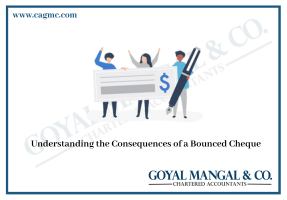
IND AS 109 Financial Instruments deals with the classification, reporting, de-recognition, and measurement requirements of all financial assets and liabilities. This standard guides the accounting and reporting of financial instruments (FI) to enable stakeholders to assess the timing and uncertainty of an enterprise’s future cash flow. In this article, we will discuss IND AS 109 – Financial Instrument.
| Table of Contents |
What is a Financial Instrument?
Any contract that gives rise to a financial asset to one entity and a financial liability or equity to another entity.
Financial Assets- Any asset that is:
- cash;
- an equity instrument of another entity;
- a contractual right to receive cash or another financial asset from another entity or to exchange financial assets or financial liabilities with another entity on terms that are potentially favorable to the entity; or
- A contract that can be or will be settled by an entity’s equity instrument and is not classified as an entity’s equity instrument.
What is a Financial Liability?
Any liability that is:
- A contractual obligation to deliver cash or another financial asset to another entity or to exchange financial assets or financial liabilities with another entity on terms that are potentially unfavorable to the entity; or
- a contract that will or may be settled by the entity’s equity instruments and is not classified as an entity’s equity instrument.
Classification of financial liabilities
The financial liabilities are calculated at amortized cost, except:
- FVTPL will subsequently be measured at fair value
- Transfers that do not qualify for de-recognition (continuing involvement approach)
- Financial guarantee agreements
- Commitments to provide a loan for less than the market interest rate
- Contingent consideration is measured at fair value with changes recognized in profit or loss.
Accounting for financial instruments
An entity shall report a financial asset or a financial liability on its balance sheet only if the entity enters into a contractual agreement relating to the instrument. A normal purchase or sale of financial assets can be posted and deposited either on the trade date or the settlement date.
Subsequent accounting of FA
- Amortized cost – assets are valued at PV of contractual cash flows (CCF) in ERI. The revenues are charged to the profit and loss account.
- FVTOCI – At the balance sheet date, such financial assets must be measured at fair value (market value) and any changes in book value due to fair measurement will be accumulated in OCI. On de-recognition of a FU under this category, the accumulated balance in OCI to such FU will be transferred to the income statement (meaning it becomes realized profit/loss). Regular (specified) revenues are always charged to the profit and loss statement.
- FVTPL – At the balance sheet date, such financial assets must be valued at fair value (market value) and any changes in carrying value due to fair valuation shall be recognized in the statement of profit and loss. Regular revenues are always charged to the income statement.
Subsequent recognition of FL
- Amortized cost – the liability is valued at the PV of the contractual cash flows (CCF) in the ERI. In case of a change of financial instrument, PV is calculated based on revised ERI, revised service period and revised payment terms and the difference should be transferred to profit and loss.
- FVTPL – the liability should be recognized at fair value and any difference should be transferred to the profit and loss account.
Hedge accounting
The objective of hedge accounting is to show in the financial statements the impact of an entity’s risk management activities that use financial instruments to manage exposures arising from specific risks that could affect profit or loss (or other comprehensive income, in the case of investments in equity instruments, for which the accounting entity has irrevocably decided to report fair value changes in other comprehensive income
For hedge accounting, contracts concluded only with a party outside the reporting accounting entity (i.e. external to the group or individual accounting entity that is reported) can be characterized as hedging instruments.
Fair value hedge accounting
Fair value hedge: A hedge of the exposure to changes in the fair value of a recognized asset, liability, unrecognized firm liability, or component of any such item, i.e., attributable to risk and could affect loss or profit. A fixed item means that the item has a fixed value in your accounts and can provide or require a fixed amount of cash in the future. Example: You have issued some bonds with a coupon of 2% p.a. It’s nice to always know how much you’ll pay in the future.
Cash Flow Hedge Accounting
Cash Flow Hedges: Hedging exposure to variability in cash flows attributable to a specific risk associated with all or part of a reported asset or liability or highly likely expected transactions could affect profit or loss. Here you have some “variable item” and you are worried that you will get less in the future or have to pay more than now.
Final words
We are in statutory audit season and few people work in companies that pay IND AS and few people are in companies that do not pay IND AS. When you compare the two financial ratios, one of the main differences you will find in the balance sheet is the financial assets and financial liabilities in the financial statements of IND AS.







